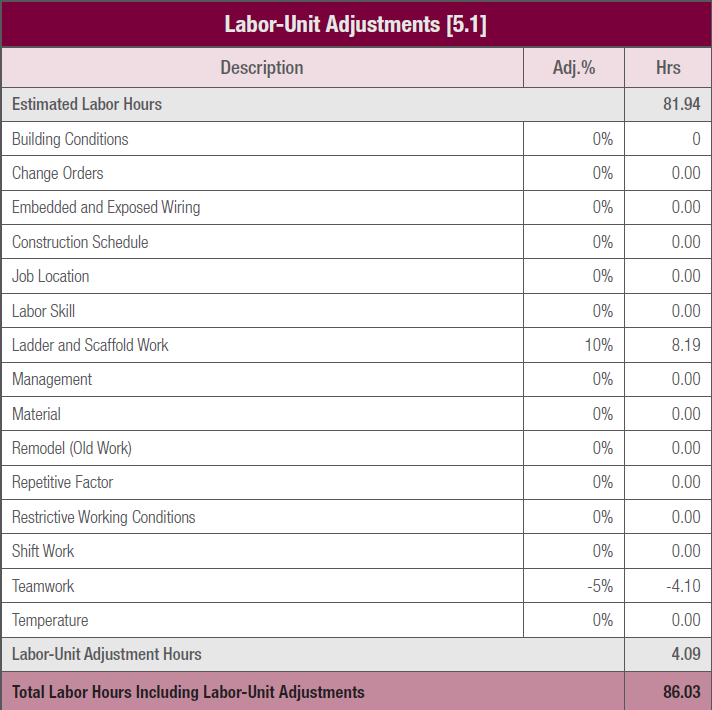|
Estimating is a skill that can make or break a career or
company. Understanding the estimating and bidding
processes is essential for your business to remain
profitable.

This is newsletter #34 in the series. If you have
missed prior newsletters, and are enjoying the series,
we encourage you to purchase the complete Electrical Estimating Program.
Click on the coupon at the bottom of this page.
|
Determining Break-Even - Labor Hours |
The first step in determining your break-even cost is to transfer the labor hours and material cost from the Price/Labor Worksheets to the Estimate Summary Worksheet. I suggest that you use a spreadsheet to create an Estimate Summary Worksheet that includes the components we discuss so all of your calculations are in one place and reducing the chance for error.
Labor-Unit Adjustments
The estimated labor hours must be adjusted for working conditions based on a percentage of the total (or fixed) man-hours for specific conditions. Determining labor adjustments comes with experence and is part of what makes estimating an art form. With experience and historical data from past performances, adjusting labor man-hours for job conditions can be quite accurate; however, at there are times when doing so is simply an educated guess. The following chart shows factors that must be considered for every job that you estimate.

|
|
| We'd love to hear from you about this series,
and the ways you're using it.
Send us your comments and feedback by clicking on
Post a Comment below. Look out for the next part
in this series a month from now, and please share
with your colleagues. |
The above content is extracted from Mike Holt's Electrical Estimating Program.
|
|
|
|

